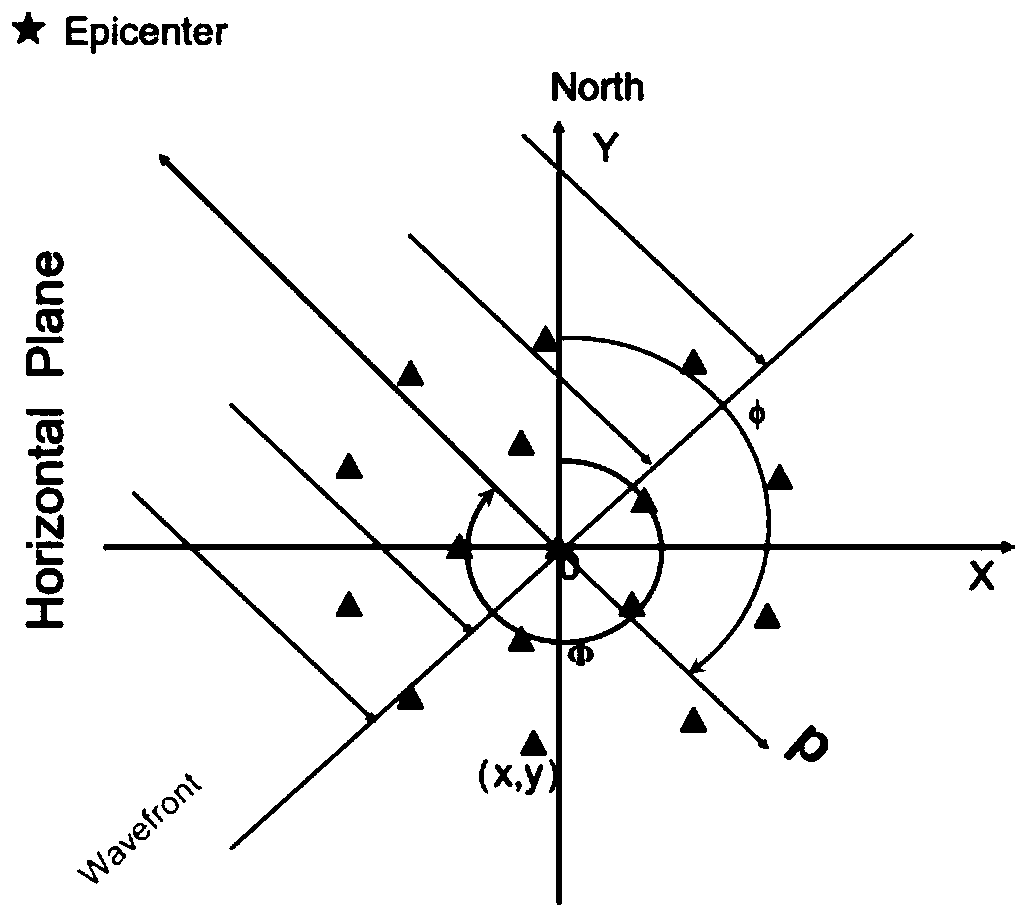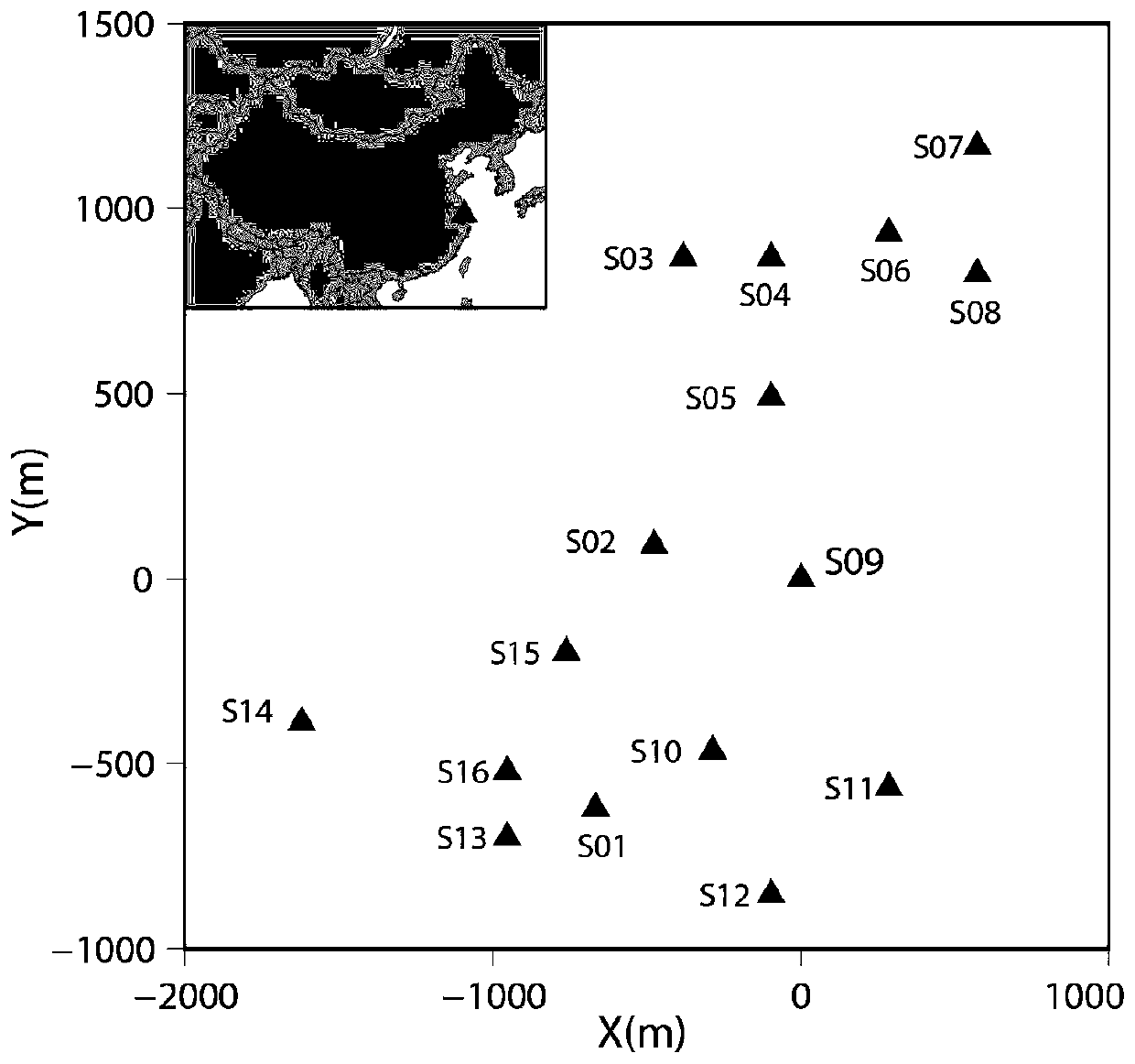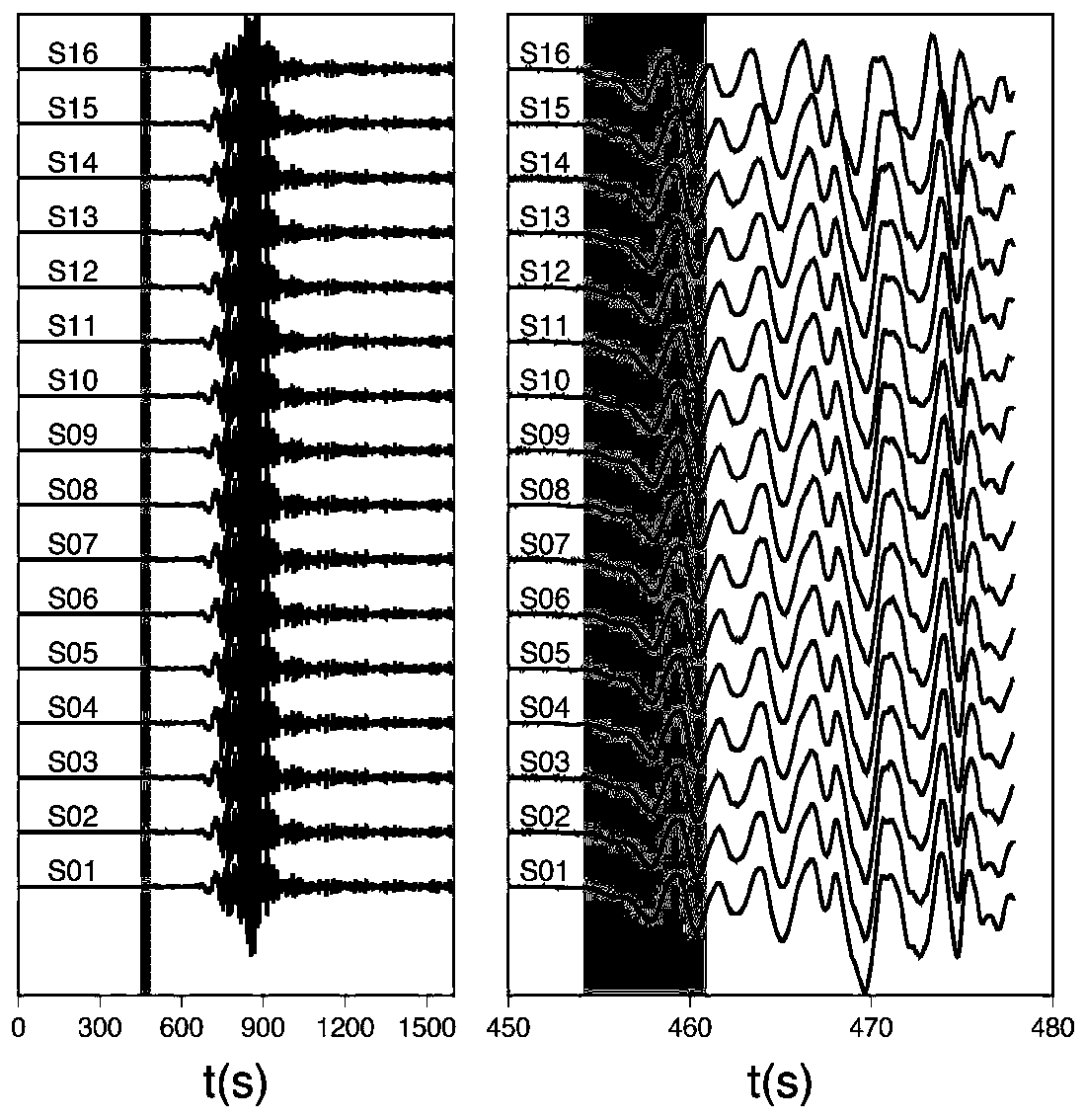A high-resolution method for determining p-wave inverse azimuth and slowness of seismic events
A reverse azimuth, high-resolution technology, applied in the field of P-wave processing of seismic events, can solve the problem of low resolution of P-wave reverse azimuth and slowness parameters, inability to distinguish P-wave reverse azimuth and slowness parameters, and inconvenience Analyze, observe, etc., to achieve high-resolution results
- Summary
- Abstract
- Description
- Claims
- Application Information
AI Technical Summary
Problems solved by technology
Method used
Image
Examples
Embodiment Construction
[0039] Such as figure 1 As shown, a method for determining the P-wave inverse azimuth and slowness of a seismic event with high resolution, the method specifically includes the following steps:
[0040] Step 1: Assume that the array is composed of N stations, take the station closest to the center of the array as the reference station, and set it as the origin;
[0041] Step 2: Read the vertical component seismic displacement waveform records of N stations, and perform instrument response removal, mean value removal processing on the records, and resample to the same sampling rate;
[0042] Step 3: Align the waveform records of all stations in step 3 according to the bursting time, and select the time window;
[0043] Step 4: Perform Fourier transform after windowing the selected seismic records to obtain the record spectrum, that is, the observation vector d(f);
[0044] Step 5: Parameterize the slowness and back azimuth, select the range of slowness and back azimuth for un...
PUM
 Login to View More
Login to View More Abstract
Description
Claims
Application Information
 Login to View More
Login to View More - R&D
- Intellectual Property
- Life Sciences
- Materials
- Tech Scout
- Unparalleled Data Quality
- Higher Quality Content
- 60% Fewer Hallucinations
Browse by: Latest US Patents, China's latest patents, Technical Efficacy Thesaurus, Application Domain, Technology Topic, Popular Technical Reports.
© 2025 PatSnap. All rights reserved.Legal|Privacy policy|Modern Slavery Act Transparency Statement|Sitemap|About US| Contact US: help@patsnap.com



